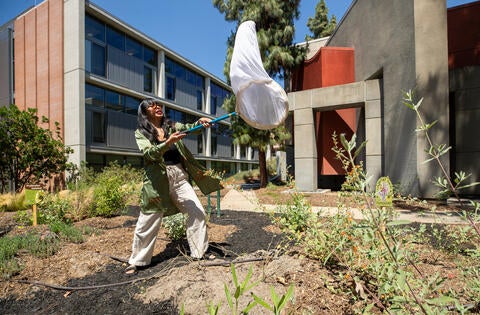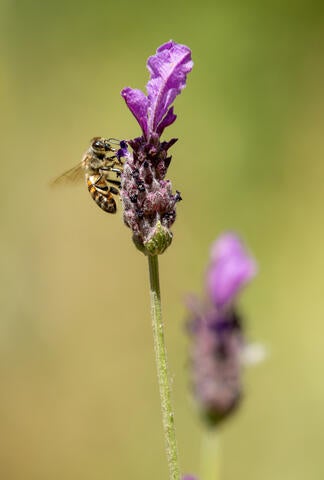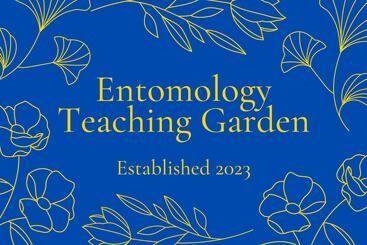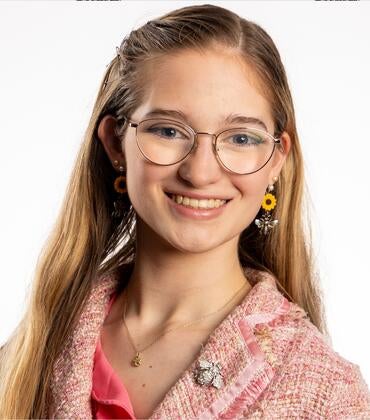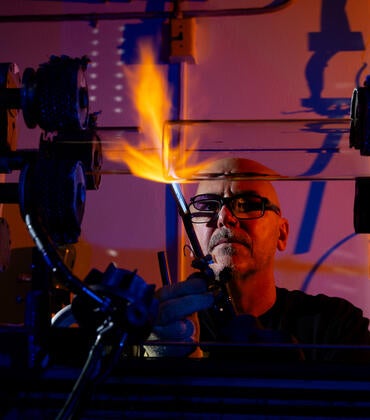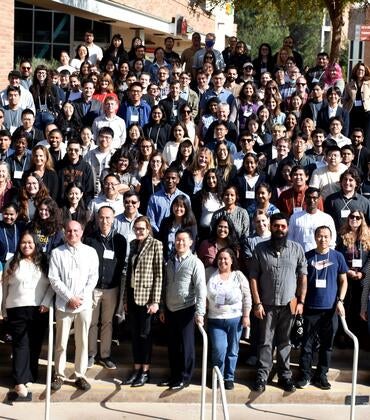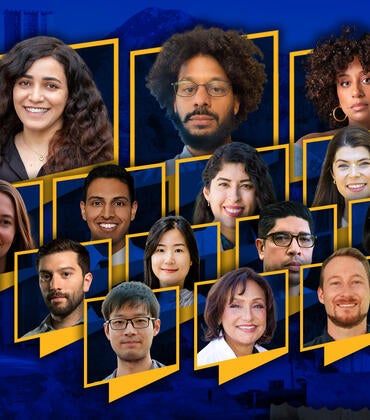Entomology students at UC Riverside now have a very short commute to a fieldwork site. The Entomology Teaching Garden focusing on attracting native insects and pollinators has opened next to the Entomology Research Museum on the bee-friendly campus, serving as an outdoor classroom and living laboratory for faculty and students.
Approximately 1,200 square feet in area, the garden has been about two years in the making. Publicly accessible, it is home to a variety of plants, such as salvias, asters, lavender, fuchsia, and manzanitas.
“We will have a plant blooming in the garden no matter the time of year,” said Erin Wilson Rankin, a professor of entomology, who manages the garden. “We have mostly native plant species that do well in gardens from Southern California-Baja to the Channel Islands. Many of these attract hummingbirds, butterflies, and bees.”
In establishing the garden, Wilson Rankin was joined by UCR’s Quinn McFrederick, a professor of entomology; Nicole Rafferty, an assistant professor of evolution, ecology, and organismal biology; and Hollis Woodard, an associate professor of entomology.
“It will be UCR students who will mostly use the Entomology Teaching Garden,” Wilson Rankin said. “They will be allowed to take plant clippings for research purposes. We expect the garden will be a superb training tool to show students how to collect flowers and, in the lab, isolate the microbes on these flowers. Other likely users of the garden will be researchers and others interested in insect conservation. Our plan is also to use the garden for outreach events.”
Rafferty expects the garden will greatly benefit a class she teaches on ecology and conservation biology that once included field trips. The size of the class has grown steadily over the years, making field trips a challenge to manage.
“This course attracts about 200 students each quarter, with discussion sections of about 20 students each,” she said. “Students can now simply go to the Entomology Teaching Garden and get hands-on experience observing pollinators.”
Rafferty and Wilson Rankin have graduate students studying Lepidoptera, an order of insects that includes butterflies and moths.
“These graduate students will also benefit from the garden,” Wilson Rankin said. “There are almost 200 species of butterfly and perhaps 150 species of moth in California. We also have five species of hummingbird that are commonly found on campus.”
Woodard’s lab studies the feeding biology and nutritional ecology of native bees, an economically and ecologically important group of pollinators.
“Most people think of the honey bee when they see or hear the word ‘bee,’” said Woodard, a bee expert. “It’s true that people rely intensively and unsustainably on honey bees for commercial pollination. But the honey bee, which is non-native to North America, is only one species. Around the world, we have more than 20,000 bee species. About 1,600 of these are native to California. We hope to find many native bees in the garden.”
McFrederick, also a bee expert, said the City of Riverside has a rich diversity of native bees. He recalled Philip Timberlake, an entomologist who worked at UCR in the first half of the 20th century.
“Timberlake was supposed to do pest management work, but he was fascinated by bees, and began collecting them, especially at UCR,” he said. “He caught 460 species of bees in the City of Riverside, which illustrates their outstanding diversity. A dream of mine is to see how many of these species are still around in Riverside. Creating small gardens like the Entomology Teaching Garden can have a large impact on native bee populations. If we build out more of these gardens locally, perhaps I can track down most of the bee species that were here in the early 1900s.”
McFrederick explained that wild bees make their living in a variety of ways: nesting underground and in trees, abandoned bird nests, and snail shells. He expects the garden will make it possible to study other ways bees make their living. A focus of his work is studying microbial symbioses between bees, bacteria, and fungi. He said the Entomology Teaching Garden can help him better understand how flowers serve as hubs for bees to share microbes.
“Flowers are like drinking fountains in elementary schools where kids swap viruses,” he said. “In flowers, good bacteria — not just pathogens — can also be swapped around. I am interested in sampling flowers year-round to learn where these bacteria spend winters.”
Wilson Rankin said some plants in the garden attract pests like aphids. She would like to know if the garden attracts native predators that eat these pests.
“Which native predators are attracted to the garden would be very relevant to my invasion ecology class,” she said.
Rafferty is interested in how climate change and warming temperatures are affecting the plants’ phenology — the timing of life-history events.
“When are plants starting to flower, when are they producing most flowers, when does their flowering period end, and how does that affect interaction with native pollinators?” she said. “I look forward to doing observational data collection on flowering times in the garden and, along with weather data, examining time series for patterns, correlations, and shifts.”
For Woodard, the Entomology Teaching Garden is a place she can take students attending her courses on insect behavior and social insects to show them pollinator behavior in action.
“It’s the perfect setting because the floral resources provided in the garden will attract bees and other insects so that my students and I can easily find them and watch them interacting with flowers,” she said.
All four scientists hope the garden motivates students and members of the public to plant their own gardens to benefit native pollinators and biodiversity.
“Our garden is a first step showing our dedication to native pollinators and is part of the important conservation work being done on campus,” Wilson Rankin said.
The Entomology Teaching Garden is funded by a grant from the UCR Academic Senate and private donations. To make a donation to the garden please contact Wilson-Rankin.
Header image shows, from L to R, Claudinéia Costa, Claudette Torres, Quinn McFrederick, Erin Wilson Rankin, Magda Argueta-Guzman, Patricia Sanchez, and Jessica Maccaro. Costa and Torres work in the Woodard lab; Argueta-Guzman and Macarro work in the McFrederick lab; and Sanchez works in the Wilson Rankin lab. (UCR/Stan Lim)
